Available Infrastructure

What is the current state of electric vehicle infrastructure in major cities ?
The current state of electric vehicle (EV) infrastructure in major cities varies significantly depending on the region and local government policies. However, there are some common trends and challenges that can be observed across different urban areas. One of the most important aspects of EV infrastructure is the availability of charging stations. In many major cities, the number of public charging stations has increased rapidly in recent years, but they are still not as widespread as gas stations for traditional vehicles. This can make it difficult for EV owners to find a convenient place to charge their vehicles, especially if they live in apartment buildings without dedicated parking spots or garages. Another key factor is the speed at which EVs can be charged. While most EVs come with standard Level 1 or Level 2 charging capabilities, which take several hours to fully charge the battery, more advanced fast charging technology is becoming increasingly available. These fast chargers can replenish an EV's battery much more quickly, making them ideal for road trips or long-distance travel. However, the availability of fast chargers is still limited in many cities, and they tend to be concentrated along major highways rather than in urban areas. The cost of charging an EV can also vary widely depending on location and time of day. In some cities, public charging stations may offer free or discounted rates during off-peak hours to encourage EV adoption. However, these incentives are not always available, and some drivers may find that the cost of charging their EV is higher than expected, especially if they rely heavily on public charging stations. Finally, the accessibility and usability of EV infrastructure is another important consideration. Some cities have made significant investments in building out their EV infrastructure, including installing dedicated EV parking spots and providing real-time information about available charging stations through smartphone apps. However, other cities may still lag behind in terms of accessibility and usability, making it more difficult for EV owners to take full advantage of their vehicles' capabilities.

When will 5G networks be available globally ?
The availability of 5G networks globally depends on technological development, regulatory frameworks, and infrastructure deployment. Technological advancements such as millimeter-wave spectrum and advanced antenna designs have paved the way for faster data speeds and higher capacity in wireless networks. Regulatory frameworks are crucial in determining the availability of 5G networks globally, as governments need to establish policies and standards that support its deployment while ensuring consumer safety. Infrastructure deployment is another critical factor, as building out the necessary network infrastructure requires significant investment and planning. Despite these challenges, several trends suggest that 5G networks will become more widely available over the next few years, including rapid adoption, increasing investment, and government support.

How do government policies influence the growth of electric vehicle infrastructure ?
Government policies play a crucial role in shaping the growth of electric vehicle (EV) infrastructure. These policies can be broadly categorized into regulatory, financial, and informational measures. Regulatory policies set standards and mandates that must be followed by businesses and consumers, while financial incentives and disincentives are powerful tools used by governments to encourage the adoption and expansion of EV infrastructure. Information plays a vital role in shaping consumer behavior and market dynamics, with governments leveraging this by providing relevant data and promoting awareness. In conclusion, government policies across regulatory, financial, and informational domains have a profound impact on the growth of electric vehicle infrastructure.

How does the development of electric vehicle infrastructure affect the adoption rate of EVs ?
The development of electric vehicle infrastructure, including charging stations and supporting technologies, significantly influences the adoption rate of EVs. Availability and accessibility of charging stations are critical factors affecting EV adoption rates. Increased availability and reduced range anxiety can lead to higher demand for EVs and boost their adoption rate. Easy-to-find and accessible charging stations make it easier for potential EV owners to plan their trips and charge their vehicles as needed. The cost of charging an EV also affects its adoption rate, with affordable pricing and transparent pricing information encouraging more people to adopt EVs. Overall, the growth of electric vehicle infrastructure is crucial in determining the adoption rate of EVs.
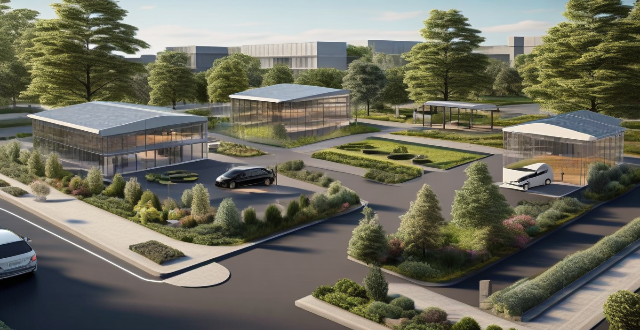
What types of infrastructure are needed to support widespread use of electric vehicles ?
The widespread adoption of electric vehicles necessitates the development and expansion of various types of infrastructure to support their charging needs, including public and residential charging stations, energy infrastructure, information systems, maintenance and support services, and urban planning and design.
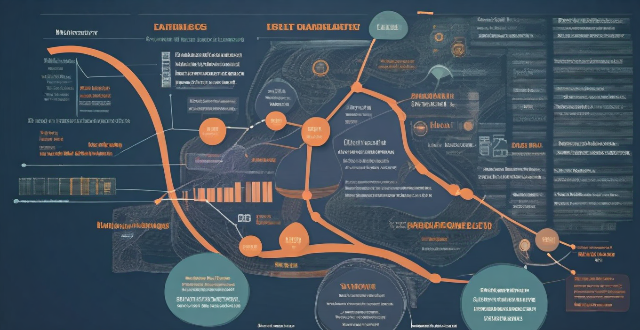
What are the best fitness instructor courses available ?
This article provides an overview of the best fitness instructor courses available, including certifications offered by the National Academy of Sports Medicine (NASM), American College of Sports Medicine (ACSM), International Sports Sciences Association (ISSA), Aerobics and Fitness Association of America (AFAA), and Yoga Alliance. The duration, cost, and accreditation of each course are also discussed.
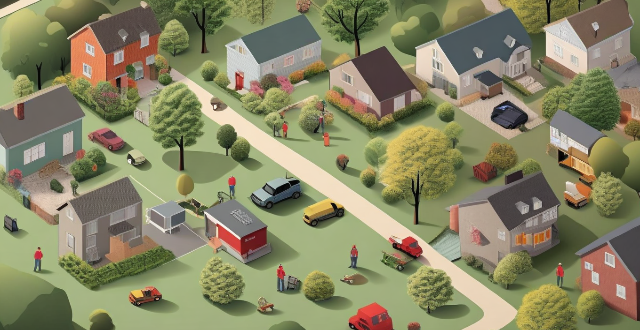
What are the best home security systems available in the market ?
Home security systems have become an essential part of modern homes, providing peace of mind and protection against burglaries, fires, and other emergencies. With the advancements in technology, there are several home security systems available in the market that offer a wide range of features and benefits. In this article, we will discuss some of the best home security systems available in the market.

What are the best online shopping deals available right now ?
Online shopping has become a popular way to purchase goods and services. With the convenience of shopping from home, consumers can find great deals on various products. Here are some of the best online shopping deals available right now: 1. Amazon Prime Day Deals 2. Black Friday Deals 3. Cyber Monday Deals 4. Clearance Sales 5. Flash Sales

How does the availability of electric vehicle infrastructure impact the environmental benefits of EVs ?
Electric vehicle infrastructure plays a pivotal role in maximizing environmental benefits. Adequate charging networks reduce range anxiety, increase EV usage, and support optimal charging times for minimal carbon footprints. Renewable energy integration through solar and wind power further enhances green initiatives. Smart urban planning and design facilitate seamless EV adoption, while consumer behavior shifts with improved infrastructure, promoting eco-friendly habits. The development of robust and innovative EV infrastructure is crucial to fully realize the environmental potential of electric vehicles.

What are the different types of bonds available for investment ?
This text discusses the different types of bonds available for investment. It explains the characteristics and subtypes of corporate, municipal, government, mortgage-backed securities, asset-backed securities, zero-coupon, floating rate, inflation-protected, perpetual, international, taxable vs. tax-exempt, secured vs. unsecured, callable vs. non-callable, registered vs. bearer, fixed rate vs. floating rate, strip, synthetic, private placement, structured, green, and supranational bonds.

What are the economic implications of investing in climate-resilient supply chain infrastructure ?
This article explores the various economic implications of investing in climate-resilient supply chain infrastructure. It highlights how such investments can lead to cost savings, increased productivity and efficiency, improved insurance rates, enhanced supply chain visibility, and competitive advantage. The article also emphasizes the importance of building a strong brand reputation and accessing new markets through sustainable and resilient practices. Overall, it underscores the significance of prioritizing investments in climate-resilient supply chain infrastructure for businesses and economies around the world.
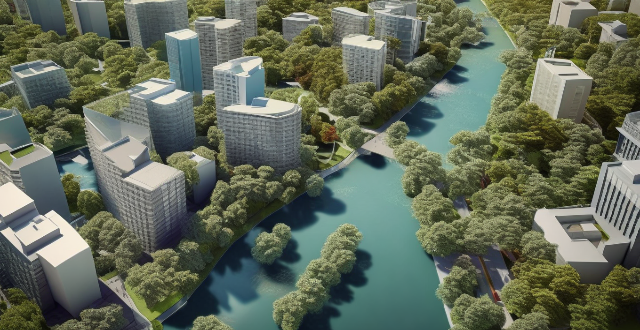
What is the significance of green infrastructure in managing urban runoff and improving water quality ?
Green infrastructure (GI) is a sustainable approach that uses natural processes to manage stormwater, reduce pollution, and enhance the overall health of urban ecosystems. It plays a crucial role in managing urban runoff and improving water quality. Some benefits of GI include reducing stormwater runoff, improving water quality, enhancing habitat and biodiversity, and mitigating climate change impacts. To effectively implement green infrastructure in urban areas, factors such as site selection, design considerations, and maintenance and management should be considered. Proper maintenance and management are essential for ensuring the long-term success of green infrastructure projects. By implementing effective green infrastructure practices, cities can create healthier, more resilient environments for both people and wildlife.
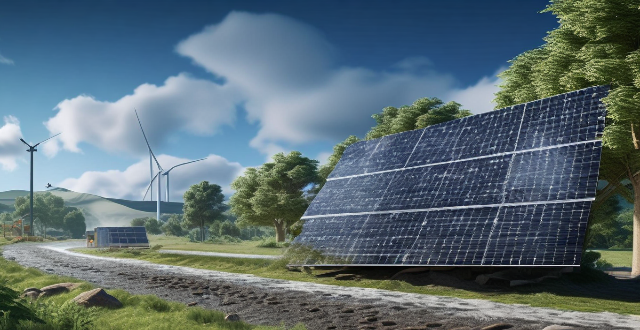
How does extreme weather impact energy infrastructure and what measures can be taken to improve resilience ?
The impact of extreme weather on energy infrastructure is significant, causing damage to power plants, transmission lines, and distribution systems. This can lead to power outages, fuel supply disruptions, infrastructure degradation, increased maintenance costs, and environmental concerns. To mitigate these impacts, proactive measures such as strengthening infrastructure, diversifying energy sources, upgrading technology, preparing for emergencies, and investing in microgrids can be taken. Reactive measures include rapid repair and recovery, emergency response teams, communication systems, insurance and financial aid, and lessons learned from each event. By implementing these measures, the resilience of energy infrastructure can be improved, minimizing negative impacts on society and the economy.

What strategies can urban planners employ to create more resilient sports infrastructure in the face of climate change ?
The article discusses strategies for creating resilient sports infrastructure in the face of climate change. These include conducting thorough climate risk assessments, incorporating green infrastructure, designing for flexibility and adaptability, ensuring energy efficiency and sustainability, strengthening infrastructure, improving water management, planning for long-term maintenance and upkeep, and engaging stakeholders and promoting community awareness.

What are the main challenges in expanding electric vehicle charging infrastructure ?
The expansion of electric vehicle (EV) charging infrastructure faces several challenges, including economic and financial barriers, technological and compatibility issues, logistical and planning challenges, regulatory and policy hurdles, and social and cultural factors. Addressing these challenges through collaborative efforts between governments, industry stakeholders, and consumers can accelerate the expansion of EV charging infrastructure and pave the way for a more sustainable transportation future.

What challenges are faced in achieving equal vaccine access ?
The text discusses the challenges in achieving equal vaccine access, which include global inequality, limited manufacturing capacity, logistical hurdles, information gap, and financial constraints. These challenges are influenced by political, economic, geographical, and cultural factors, as well as infrastructure deficits and funding shortfalls. To address these challenges, coordinated international efforts, increased funding, improved infrastructure, effective communication strategies, and equitable distribution mechanisms are needed.

What are the best accessories for Apple Watch ?
The Apple Watch is a versatile and powerful device that can be enhanced with a variety of accessories. Some of the best options available include watch bands, charging docks, screen protectors, waterproof cases, and standalone apps and games. With so many options available, it's easy to customize your watch to fit your needs and style preferences.

What challenges do rural areas face when it comes to sports facilities and infrastructure ?
Rural areas face numerous challenges in providing sports facilities and infrastructure, including lack of funding, inadequate infrastructure, transportation issues, limited recreational opportunities, accessibility and inclusivity concerns, low community engagement and participation, and weather and environmental factors. To overcome these challenges, rural communities can partner with local organizations, seek government grants, promote community involvement, and explore innovative solutions like mobile sports units or temporary facilities.

How can cities with limited space accommodate the construction of charging networks ?
In cities where space is scarce, building charging networks for EVs requires creative solutions. Public-private partnerships, smart urban design, and repurposing underutilized spaces are among the strategies that can help integrate charging infrastructure into compact city environments. Encouraging residential charging, investing in modular and mobile units, implementing digital management systems, and integrating charging infrastructure into public transit systems are also effective approaches. By employing these tactics, cities can create a robust charging network that supports electric vehicle adoption, even in densely populated areas with limited space.

What are the challenges faced in implementing Smart Grid Technology ?
The text discusses the challenges faced in implementing smart grid technology, which can be broadly classified into technical, economic, and social categories. Technical challenges include interoperability issues such as integration with existing infrastructure and lack of standardization, as well as cybersecurity concerns like data privacy and infrastructure vulnerability. Economic challenges involve high initial investment costs, limited government support, and difficulties in finding suitable financing options. Social challenges encompass public acceptance and awareness issues, trust concerns among consumers, legal and regulatory hurdles related to data privacy and energy policies, and policy uncertainty. Overcoming these challenges is essential for achieving a more efficient, reliable, and sustainable energy future.

What are some common barriers to achieving climate justice, and how can we overcome them ?
Achieving climate justice faces barriers like lack of awareness, economic disparities, and political polarization. Strategies to overcome these include education campaigns, economic policies supporting low-income households, and fostering dialogue among stakeholders. Other challenges are fossil fuel dependency, infrastructure issues, and legal hurdles, which can be addressed by promoting renewable energy, prioritizing resilient infrastructure investments, and advocating for stronger environmental regulations.

What challenges does the Clean Energy Revolution face in the future ?
The clean energy revolution is a global effort to transition from fossil fuels to renewable energy sources. This transition faces several challenges in the future, including technical, economic, social, and political factors. Some of these challenges include developing efficient and cost-effective energy storage solutions, upgrading existing grid infrastructure, high upfront costs for renewable energy infrastructure compared to traditional fossil fuel plants, job displacement in industries traditionally reliant on fossil fuels, raising public awareness about the benefits of clean energy, ensuring that clean energy benefits are distributed equitably across different socioeconomic groups and regions, consistent and long-term policy support, coordinated international efforts to tackle global climate change effectively, establishing stringent environmental standards and regulations, and proper planning and allocation of resources for infrastructure projects related to clean energy. Addressing these challenges will require concerted efforts from various stakeholders including governments, industry leaders, researchers, and the general public.

How does sports infrastructure contribute to urban development ?
This article discusses the various ways sports infrastructure contributes to urban development, including economic benefits such as job creation and tourism, social benefits such as community building and educational opportunities, and environmental benefits such as green spaces and sustainable practices. It emphasizes the importance of investing in sports facilities for enhancing the quality of life for residents and promoting sustainable growth in cities.

What is climate adaptation and why is it important ?
Climate adaptation is a proactive approach aimed at minimizing harm and exploiting the benefits of global changes by adjusting to expected impacts, such as protecting ecosystems and human health, avoiding costly damages, and preserving cultural practices. It involves structural adjustments like infrastructure reinforcement and water management, policy integration, public education, technological advancements in early warning systems, and the promotion of green infrastructure. Adaptation strategies are crucial for building community resilience, ensuring economic sustainability, and fostering long-term development.

Are there any potential drawbacks or challenges with implementing network slicing ?
Network slicing is a promising technology that allows multiple virtual networks to coexist on a shared physical infrastructure. It enables operators to provide tailored network services for different use cases, such as enhanced mobile broadband (eMBB), ultra-reliable low-latency communications (URLLC), and massive machine-type communications (mMTC). However, there are potential drawbacks and challenges associated with implementing network slicing, including the complexity of management and orchestration, significant infrastructure investment required, standardization and interoperability issues, skill gap within organizations, and regulatory and legal aspects to consider.

How do different countries approach public transportation infrastructure and policies ?
The topic summary for the text on "Public Transportation Infrastructure and Policies in Different Countries" is as follows: Public transportation infrastructure and policies vary significantly across different countries, influenced by each nation's geography, economy, culture, and governmental priorities. The United States has well-developed urban transit systems but relies heavily on personal vehicles in suburban and rural areas. China boasts a high-speed rail network and rapidly expanding urban metro systems, with clear prioritization of public transport over private vehicles. Germany has a comprehensive regional train network and emphasizes sustainability in its transit planning. Japan is known for its efficient urban rail systems deeply integrated into society and culture. Brazil focuses on social inclusion through accessible and affordable public transport, including pioneering Bus Rapid Transit (BRT) systems. These diverse approaches highlight how public transportation strategies can significantly impact urban congestion, air quality, and citizens' quality of life.

How can Climate-Smart Technologies be integrated into existing infrastructure ?
Integrating climate-smart technologies into existing infrastructure is vital for building resilience and achieving a low-carbon future. The process involves assessment, planning, upgrading buildings with energy-efficient systems, integrating renewable energy sources, implementing smart grids, adopting water-efficient technologies, retrofitting sewage treatment plants, installing smart water meters, promoting public transportation, upgrading roads, implementing intelligent transport systems, encouraging green building practices, incorporating green roofs and walls, using eco-friendly materials, implementing waste-to-energy projects, promoting recycling, encouraging circular economy principles, adopting compact urban designs, preserving and restoring ecosystems, developing green corridors, establishing a robust monitoring system, and conducting regular evaluations. This collaborative effort from governments, private sectors, and communities ensures a successful transition towards sustainability.

Can I use AirPods with Android devices ?
AirPods can be used with Android devices, but the experience may not be as seamless as it is with Apple devices. Some features, such as double-tap to pause/play and automatic ear detection, may not work consistently on Android devices. Additionally, Siri integration and battery life indicator are not available on Android. If you're looking for a pair of wireless earbuds that work better with Android devices, there are several alternatives available, such as Samsung Galaxy Buds, Jabra Elite 65t, Sony WF-1000XM3, and Google Pixel Buds.
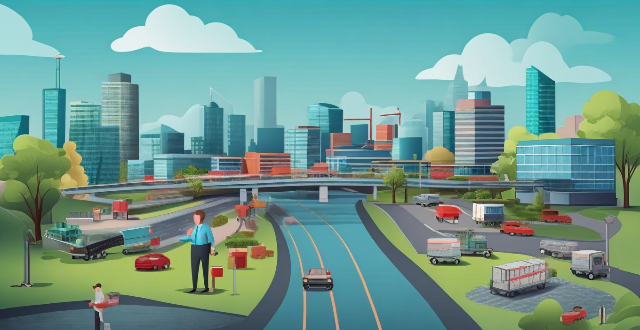
How can low-income countries develop their infrastructure and improve transportation systems ?
The text discusses the importance of infrastructure and transportation systems for national development, highlighting their role in economic growth, improved living standards, and enhanced connectivity. It outlines strategies for developing these systems in low-income countries, including government intervention and policies such as public-private partnerships and financial incentives; international assistance from multilateral organizations, bilateral aid, and foreign direct investment; technology and innovation through smart grids, telecommunication networks, and sustainable construction methods; and capacity building through technical training, research and development, and public awareness campaigns. The conclusion emphasizes that a comprehensive approach addressing these areas is crucial for achieving sustainable development and improving citizens' lives.
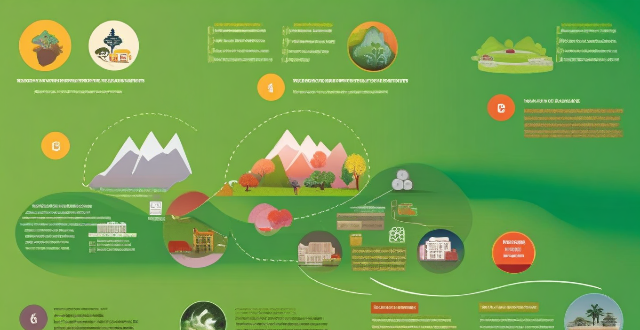
What are the economic implications of climate change for citizens, and how can they prepare for them ?
Climate change has significant economic implications for citizens across various sectors. The impact on agriculture, energy, healthcare, and infrastructure can lead to increased costs and reduced incomes. However, by taking proactive measures such as diversifying crops, switching to renewable energy sources, investing in preventive healthcare, and improving infrastructure resilience, individuals and communities can prepare for and mitigate the negative impacts of climate change.